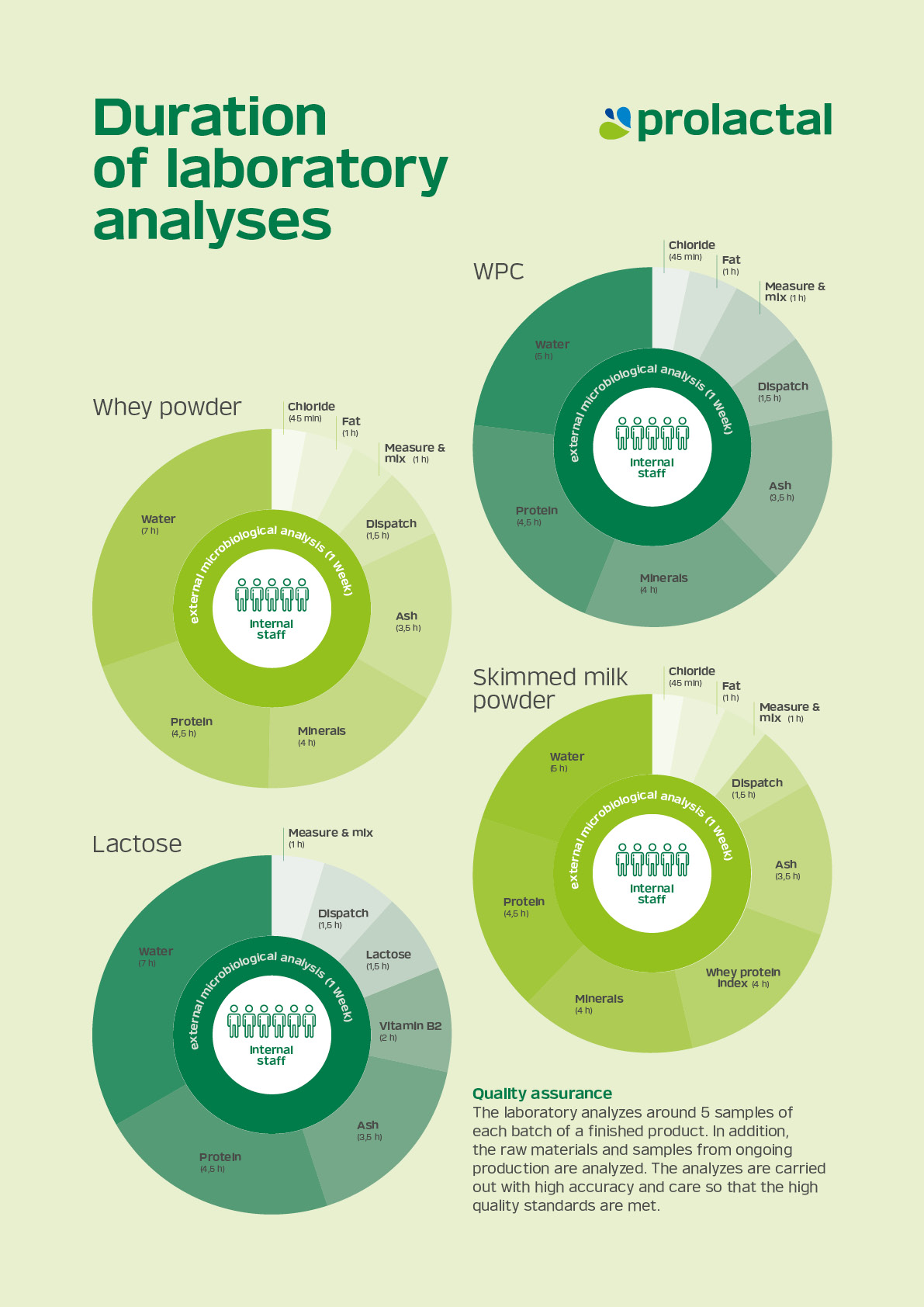An essential part of the validation is the incoming goods inspection. We check the following values as soon as the high-quality raw milk and whey are delivered to Prolactal: ph value, acidity, sensory properties, temperature, inhibitors, fat/dry matter/protein, nitrate/nitrite/peroxide. Only when all parameters meet the required quality criteria, the milk is released for onward movement into a defined tank. This is how we guarantee the special quality of our end products. Read on for more information on the inspections.
Ph-value
Measurement using a ph electrode.
Level of acidity
Titration of raw milk, against sodium hydroxide solution up to the equivalence point, using an indicator.
Sensory quality
Each delivery is tasted. The appearance, smell and taste are evaluated (organoleptic examination).
Inhibitor
Raw milk is checked for the use of antibiotics using inhibitor test strips (Charm MRLBL3), a test for the detection of beta-lactam antibiotics according to the European MRL limit value in raw milk and pasteurized milk. For this purpose, a precise amount of the milk is pipetted onto the test strip and then incubated in a device with heating. The result is shown after approx. 3 minutes.
Fat, dry matter and protein
Using a miloscan, a fully automatic mid-range infrared spectrophotometer which is optimized for the determination of dairy products. Based on the measured reflected light, the dry matter, protein, ash and water content can be determined by comparison and calibration with standrad samples. The liquid sample is sucked into the device, analyzed and the results displayed on a PC.
Reference analysis
Every week, one sample per incoming product group is tested for fat, dry matter, protein and ash. The results of the detailed reference methods are e.g. utilized for the calibration of the MilcoScan – a device used for quality monitoring.
- Fat is analyzed by dissolving the sample with sulfuric acid and centrigufing after adding amyl alcohol in butyrometers according to Gerber.
- The dry mass is determined gravimetrically by drying in aluminium vessels with sea sand.
- The protein content is checked with an analyzer for determining nitrogen according to Kjeldahl. Thereby, the milk is digested with sulfuric acid and a catalyst in its own apparatus with a special hood at around 400 degrees Celsius. Then, the nitrogen content is determined with the help of sodium hydroxide solution and a titration of ammonia against boric acid. The nitrogen content is equivalent to the protein content and can be calculated using a factor.
- Th ash content is determined gravimetrically by incinerating the samples in a glass crucible with the aid of an incinerator and a muffle furnace.
Nitrate, nitrite and peroxide content
Determined on raw whey and goat’s milk using test stripes.
Delivery papers
Depending on the product, the delivery papers are checked for the validity and presence of e.g. Organic certificates, GMO certificates, indications of origin, EU company numbers, Reinings certificates, etc.






